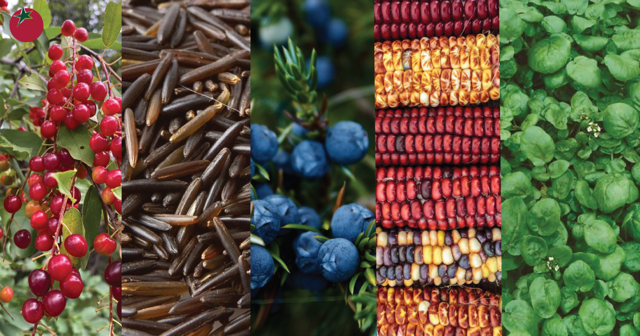
FOOD SYSTEMS
Revitalizing Indigenous Food Systems with Chef Sean Sherman
Dawn Reiss writes in New Hope Network:
“A few years into his career, Sherman had an epiphany to do the work that he’s- doing now.
‘I realized the complete absence of indigenous anything in the culinary world,’ Sherman says. ‘It was really striking to me because I’d grown up on the reservation. I knew what it meant to be Lakota and I realized the food was just missing.’
Sherman began investigating. He wanted to know what his Lakota ancestors ate and how they gathered, hunted, farmed, gardened and traded for food. He wanted to know how they sourced salts, fats, sugars and oils. ‘It shot me on a path to try to understand and get to the core of it,” he says. ‘And it became more of a study of history.’
Sherman’s journey helped him understand the direct impact of colonialism and what happened to Indigenous peoples. ‘It was a very short time period that so much of our culture was erased,’ says Sherman, who co-authored the James Beard-award-winning cookbook The Sioux Chef’s Indigenous Kitchen.”
In this episode of New Food Order, a podcast investigating the business of tackling climate and social crises through food and agriculture, Louisa Burwood-Taylor, the head of media research at AgFunder and editor of AgFunder News, and Danielle Gould, the founder of Food+Tech Connect, talk to Sherman about colonialism’s impact on Indigenous cultures and foodways, why preserving Indigenous culture and wisdom is so important. “Lessons can be learned if we take the time to listen and understand the lessons of the past,’ Sherman says.”
Listen to the podcast on Apple
Listen to the podcast on Spotify

VACCINES
Edible Vaccines?
Peter A. McCullough, MD, MPH writes for Courageous Discourse:
“The recent debate in the Missouri House of Representatives on HB 1169 which is transparency legislation for disclosure of genetic material in the food supply has raised the question: how far along is this whole field? Neither the US Cattleman’s Association nor the National Cattleman’s Beef Association has issued an opinion on HB 1169. Many farmers have been using the Merck Sequivity mRNA vaccine line in swine for several years. While the current products used in livestock are meant to protect the animals with short lifespans from immediate infectious disease threats, there is concern over the future use of food as an intentional means to vaccinate the consumer.
Kurup and Thomas published one of many papers describing the lofty goals of using foods, mainly plants, to deliver vaccines to humans in order to induce mucosal immunity. Protection in the sinuses, oral cavity, and GI tract is not strong from intramuscular injections unless the pathogen is invasive and blood born in severe cases.
This paper summarizes a WHO meeting: “In January 2005, WHO conducted a meeting regarding the regulatory evaluation of plant-based vaccine. The meeting ended up by concluding that the existing guidelines for development, evaluation, and use of vaccines made by conventional methods can be applied in the production of edible vaccines. There were specific issues related to edible vaccine. Plant-derived vaccines should be clinically tested under US investigational new drug application, and also must follow all the regulatory and GMP requirements.”
Read the full article: Edible Vaccines: Promises and Challenges
What are the implications of genetic vaccines in animals for our food supply? Get more insight from Peter A. McCullough: Novel Vaccine Technologies in Veterinary Medicine: A Herald to Human Medicine Vaccines
Kim Iversen interviewes Peter McCullough about COVID-19 vaccines in the food supply
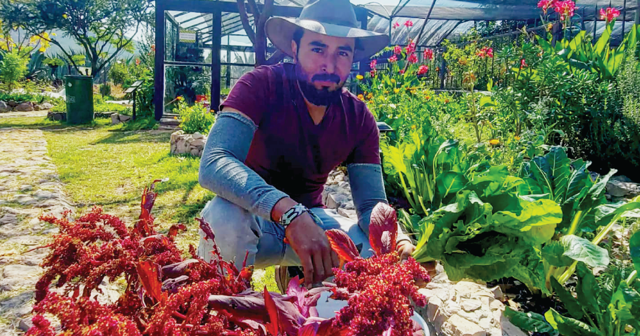
REGENERATIVE AGRICULTURE
Regenerative, Organic and Agroecology: What’s the Difference?
Ellen Warrell writes in Wicked Leeks:
“Regenerative, organic, agroecological. You might encounter all of these terms in the search for ‘sustainably’ grown food (there’s another!). This word soup is a great sign that lots of farming communities are experimenting to find a better way, but as a consumer, it can be pretty confusing.
Here’s a quick guide to each term, to help you make sense of labels, and separate the green from the greenwash.
What is organic farming?
Organic farming first arose in the 1940s, as a reaction against the industrialization of agriculture. These days, it’s got a strict legal definition, and to call your produce “organic” you must be certified. In the UK, most organic goods are certified by the Soil Association or OF&G – just look for their stamps on the label.
Above all, organic farming is about nature: protecting it, enhancing it, and working in harmony with rather than fighting against it. The whole farm system works together with natural systems and cycles, for the good of the soil, plants, animals, humans, and wider environment.
Organic farmers…
- Don’t use artificial pesticides, fertilisers, or weedkillers
- Protect the health of the soil by using crop rotations to build its fertility naturally
- Guarantee the highest animal welfare standards of any farming system
- Encourage biodiversity and protect sensitive habitats
- Minimise waste, feeding as much as possible back into the farm
- Never grow genetically modified (GM) crops
Among many other detailed rules. Regular inspections make sure farmers are staying true to these standards.
What is regenerative farming?
Regenerative has been gathering speed as a grassroots movement among farmers over the past decade. It’s not yet a standardised system, like organic – instead, it’s more of a mindset. The phrase can be used to describe a broad range of farming activities which aim to restore healthy soils, clean water, and biodiversity.”
“Find out what three main routes to sustainable farming actually mean and how to support them.”:
Read more: Regenerative, Organic and Agroecology: What’s the Difference?
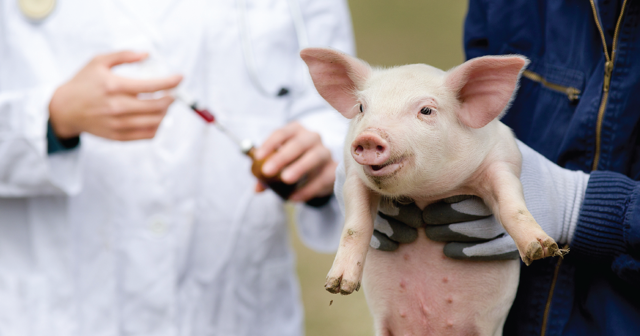
GE VACCINES
Are You Eating Pork Injected With mRNA Livestock Vaccine?
Dr Mercola writes:
- “For the last couple of years, I’ve recommended not eating pork due to its high linoleic acid (LA) content, but there’s an even bigger reason to avoid it now. Since 2018, pork producers have been using customizable mRNA-based “vaccines” on their herds.
- The very first RNA-based livestock vaccine, a swine influenza (H3N2) RNA shot licensed in 2012, was developed by Harrisvaccines. The company followed up with an avian influenza mRNA shot in 2015. Harrisvaccines was acquired by Merck Animal Health later that year.
- CureVac developed an mRNA-based rabies shot for pigs in 2016.
- The swine vaccine platform Sequivity, introduced in 2018, was developed by Merck in partnership with Moderna. Sequivity can produce endlessly customized “vaccines,” none of which undergo safety testing.
- Americans have been eating pork treated with gene therapy for nearly five years already, and even more of our meat supply is about to get the same treatment. mRNA-lipid nanoparticle shots for avian influenza are in the works, as are mRNA shots for cows. Lobbyists for the Cattlemen’s Association recently confirmed they intend to use mRNA “vaccines” in cattle, which might affect both dairy and beef.
- Missouri House Bill 1169 would require labeling of products that can alter your genes. It would also require companies to share information about the potential transmissibility of gene-altering interventions, and asserts that fully informed consent must be given for all vaccines, gene therapies and medical interventions.”.
Read more: Are You Eating Pork Injected With Merck’s mRNA Livestock Vaccine?
Are mRNA vaccines being developed for livestock? You bet they are! So what does this mean?
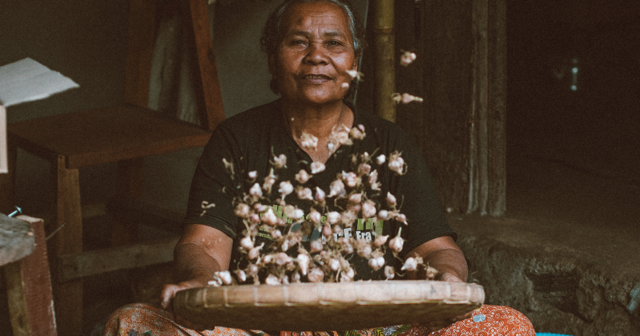
EARTH DAY 2023
Happy International Mother Earth Day!
United Nations Development Program
“International Mother Earth Day is a moment to encourage each other to live in harmony with nature and the Earth as our common home. To celebrate, read about and learn from indigenous peoples on the frontlines of climate action.
Take a moment on this page to hear some of their voices, and find out more about their solutions to sustain biodiversity, ecosystems and a livable climate.
Start with a global overview of indigenous peoples, and 10 things we all should know.
Meet the winners of the Equator Prize, and watch how community and indigenous initiatives around the world are restoring relationships with nature. Listen to a joint statement on global crisis and local solutions.
What do indigenous youth have to say about our Earth? Archana Soreng, a climate activist and youth advisor to the UN Secretary-General, weighs in on how we need to love nature as we love ourselves. Read her remarks to the US Leadership Summit on Climate.
With young women all over the world taking the lead on climate action, Xiye Bastida, a young indigenous woman from Mexico, describes how she became an activist for climate justice.
Did you know? At least a quarter of the world’s land area is owned, managed, used or occupied by indigenous peoples and local communities. Get a perspective on indigenous peoples and the land they protect from the UN Environment Programme. Learn about its policy to promote environmental defenders.
Explore some of the complexities that indigenous people face in the transition to renewable energy.
See the call of human rights experts, including Francisco Cali Tzay, Special Rapporteur on the rights of indigenous peoples, for cuts to coal.
Learn about an innovative grant programme investing in sustainable forestry by indigenous peoples and local communities, and lessons in empowering indigenous women in climate action. Take a journey to local community initiatives in Burkina Faso.”
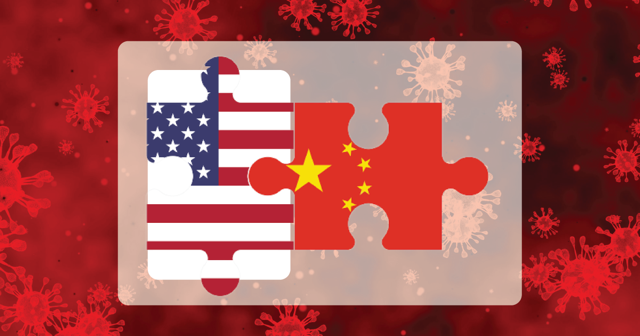
COVID ORIGINS
Representatives Bicker and Blame China While Minimizing Scrutiny to US Institutions
Sam Husseini writes:
“The House Select Subcommittee on the Coronavirus Pandemic held a hearing on Tuesday: ‘Investigating the Origins of COVID-19, Part 2: China and the Available Intelligence’. It was not an actual investigation, rather it just gave airing to views of different parts of US spook agencies, the “intelligence community” that all finger China and minimize scrutiny of US institutions.
We’ve had years of people saying ridiculous things in the name of ‘science’. Now we have people saying convenient things in the name of ‘intelligence’ and ‘truth’.
There were serious problems with what was being said by most speakers. The only ones who came out looking good were some activists who crashed the hearing wearing “Jail Fauci” t-shirts. The activists were Sue Wheaton, Kathy Boylan and John Kelly. At least some of them are associated with the grassroots Citizens’ Covid Origin Inquiry — see the group’s website: CovidOrigins.org. Kelly for a time ironically wore a “Jail Fauci” mask as well. (Disclosure: I have sat in on some of their meetings and they have linked to some of my pieces on their website.)
See my lengthy twitter thread for blow-by-blow of the hearing and C-SPAN video for the full hearing — you can see the citizens with their t-shirts in the background. (Note: the Congressional video of the hearing is from an angle that keeps the public out of the frame.)
Emily Kopp (with video clips) and Prof. Richard Ebright highlighted some of the more reasonable comments made by former Director of National Intelligence John Ratcliffe: ‘[I]f…intelligence..supporting..lab leak…was placed side-by-side with…intelligence…pointing to…natural…’spillover’…lab leak side of..ledger would be long and overwhelming….’”
Read more: Are we any closer to solving the COVID origin mystery? An update on investigations.
Ban Gain-of-Function ‘Biomedical’ and ‘Biodefense’ Research!
Download or print this flyer on how to Prevent Another Pandemic

HEALTH ISSUES
How Music Can Prevent Cognitive Decline
From Neuroscience News:
“Normal aging is associated with progressive cognitive decline. But can we train our brain to delay this process?
A team from the University of Geneva (UNIGE), HES-SO Geneva and EPFL has discovered that practicing and listening to music can alter cognitive decline in healthy seniors by stimulating the production of grey matter.
To achieve these results, the researchers followed over 100 retired people who had never practiced music before. They were enrolled in piano and music awareness training for six months. These results open new prospects for the support of healthy aging. They are reported in NeuroImage: Reports.
Throughout our lives, our brain remodels itself. Brain morphology and connections change according to the environment and the experiences, for instance when we learn new skills or overcome the consequences of a stroke. However, as we age, this ‘‘brain plasticity’’ decreases. The brain also loses grey matter, where our precious neurons are located. This is known as ‘‘brain atrophy’’.
Gradually, a cognitive decline appears. Working memory, at the core of many cognitive processes, is one of the cognitive functions suffering the most. Working memory is defined as the process in which we briefly retain and manipulate information in order to achieve a goal, such as remembering a telephone number long enough to write it down or translating a sentence from a foreign language.”
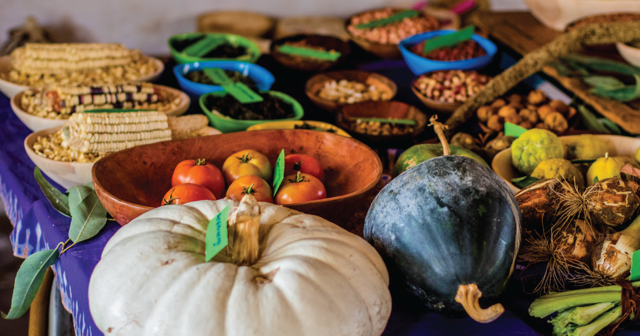
GMOs
People’s Rights in the Face of the Rise of GMOs in Africa
From Landportal.org:
Seed Fairs are promoting farmer-controlled seed systems for food sovereignty in Africa:
“The government entices farmers into using corporate seed, through farm input subsidy programs, yet these provide limited quantities of seed and range of crop varieties. Thus, peasant farmers resort to the use of seed from their own seed systems, which are retained from the previous harvest or acquired through local exchanges.”
“This visit was productive and is a positive step for us as peasant farmers, towards building a strong and sustainable seed system for farmers in our local districts. We are wholly committed to strengthening peasant farmers’ access to diverse, locally adapted seed and continue to work towards achieving the remarkable ideal of sustainable food production systems, through informal, community-based seed production.”
—Simbisai Machave
“African seed and food systems are at a crossroads, as traditional seed systems are fast vanishing and being eroded because of the expansion and intrusion of industrial agriculture, which is foisting false solutions to the seed and food systems crises in Africa, such as corporate-owned hybrid and GM seeds and food, which has resulted in deepening inequalities, resource extraction and food insecurity.
“Africa is rich in seed diversity but starvation is the order of the day, where agribusiness from the North, dump hybrid and GM seeds on Africa and convince African countries to grow cash crops for export, at the expense of producing food to feed Africans. Food aid will be the result of growing what we don’t eat and eating what we don’t grow.
“The agroecology movement is emerging fast to correct this corporate controlled agrarian regime, hence the importance of such a fair that provides safe spaces for farmers from different African regions to come together and share the struggles of their regions. It also provided an opportunity for us to discuss how we respectively work to create spaces and influence our governments to recognize and support FMSS and agroecology as an alternative to industrial agriculture, to achieve African food sovereignty. The Fair also demonstrated how national governments can be brought into these important conversations.”
—Ngoni B. Chikowe,

LITTLE BYTES
Other Essential Reading and Viewing for the Week
Fast Fashion Goes To Die in the World’s Largest Fog Desert. The Scale Is Breathtaking.
New CRISPR Inhibitors Found With Help From U.S. Department of Defense Funding
The Cornucopia Institute Organic Food Scorecard, see how your food rates!
10 Simple Things to Do to Celebrate Earth Day
19 Earth Day Books For Kids Who Want to Save the World
Can Regenerative Wool Make Fashion More Sustainable?
Look Up, Listen, and Be Very Concerned. Birds Are Vanishing – And Their Crisis Is Our Crisis
How Do We Make Organic, Nutrient-Dense Food Affordable for Everyone?
What Is Gain Of Function Research, And Why Should It Be Banned?




